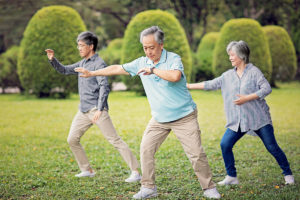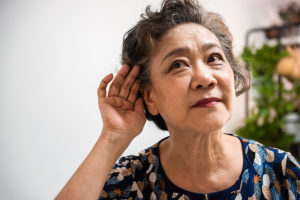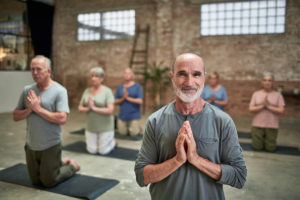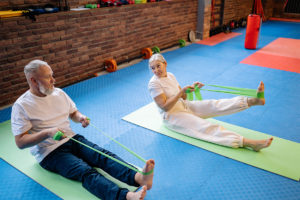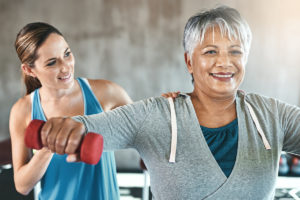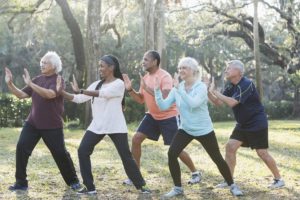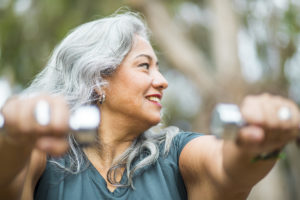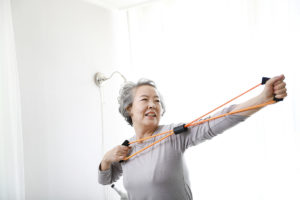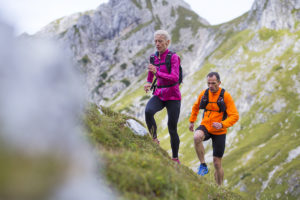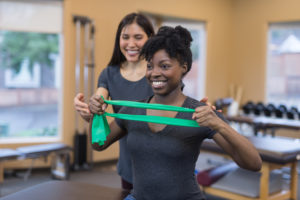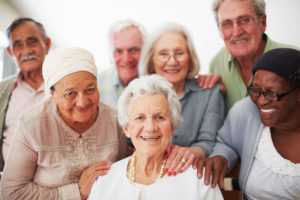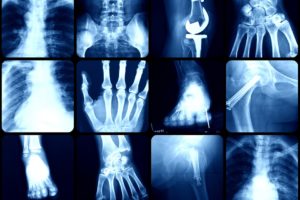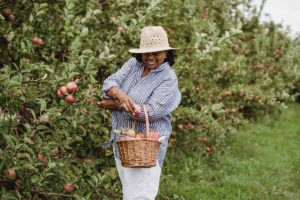Functional Aging/Older Adults
Tai Chi for Weight Loss
There may be benefits of tai chi for weight loss. Researchers investigated whether tai chi effectively reduces belly fat in older adults.
Hearing Loss and Physical Function
Research finds that people with hearing loss have significantly poorer physical function over time compared with those with good hearing.
Research-Based Yoga for Seniors
If you’d like to elevate your fitness services, adding yoga for seniors will set you apart and help your older clients even more.
COVID-19: Early Symptoms of Infection Vary
With COVID-19, early symptoms of infection vary among age groups and between men and women. That’s the conclusion of a paper that appeared recently in The Lancet Digital Health. The biggest differences occur…
Physical Activity in Later Life Still Beneficial
Inactive people may have a second chance. Increasing physical activity in later life benefits benefits life expectancy, according to a study.
Fall Prevention for Older Adults
Fall prevention is a vital part of functional training for your aging clients. Changes in communication between the nervous and muscular systems as age we are likely to result in a loss of balance, which is a risk factor in the older population. Kyle Stull, DHSc, a content development manager at NASM and an instructor for the Department of Health and Human Performance at Concordia University, offers some practical advice in training clients for fall prevention.
Functional Training for Active Aging
Loss of functional abilities significantly impacts life quality. Here we offer a brief overview of functional training methods.
Motivating Older Athletes
How do you motivate older athletes? Researchers conducted a qualitative study to understand what motivates older male and female triathletes.
Tai Chi Is Good for Older Adults
Why tai chi? These Chinese movement patterns have been around for centuries. In recent years, study after study has proven their benefits—particularly for older exercisers—yet most fitness professionals seem to…
Muscle Strength in Older Women
Preserving muscle strength and function and maintaining a healthy body composition are important objectives for older women.
Resistance Band Training for Older Women
Older women who did resistance band training showed significant improvements in functional fitness and in glucose, according to a study.
Weight Training for Women Over 40
Losing muscle and gaining fat are expected for women over 40, but the right resistance training can positively affect body composition.
Do Older Athletes Have an Edge?
Boost the morale of older athletes by letting them know that, in certain sports, age is an advantage, according to recent findings.
Stroke Recovery Training
Although many trainers may believe that ongoing stroke recovery is either the sole purview of physical therapists or limited to those so infirmed that progress is limited, there is an incredible opportunity to make a profound difference to survivors.
Fit to Travel: Exercises for Seniors
Programming exercises for seniors is more important than ever, especially now that travel is opening up again, but your clients may not have kept up with their workouts over this last year. Here are some great ways to prepare your active agers for more adventure.
Reclaim Wellness and Health for Seniors
The ICAA’s recent Call to Action invites businesses and organizations to implement wellness strategies to improve health for seniors.
Corrective Exercise Success Story
For many, watching a baseball game at home is a simple pleasure, but for retired teacher and baseball fan Leta, sitting on her couch for an extended period often meant debilitating backaches. In 2018, she found corrective exercise and functional-aging specialist Damien Joyner, JD. His patience and skillful training turned out to be a brand-new ballgame.
Bone Density and Healthy Aging
If you work with adults 50 and older, it may be time to educate them about the impact exercise can have on bone density and healthy aging.
Light Activity for Older Women’s Mobility
Light activity, like walking, shopping or gardening, can help avoid mobility loss or disability in older women, according to research.
Apps and Websites for Older-Adult Training
Fitness professionals who are passionate about training older adults may want to consider developing digital and virtual exercise options.
